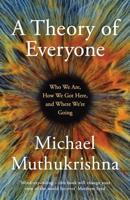Publisher's Synopsis
Casual readers of the title of this book might be forgiven for thinking that it is a little esoteric, far-removed from the pressing day-to-day concerns of humans and wildlife in the drylands of the world. But they could not be more wrong. It addresses an issue of the utmost practical importance in the world today, yet does so on the basis of exciting new theory about how the world operates. Of the billion or so human beings who now live in the world's arid and semi-arid lands, a majority depend on natural resources for their livelihoods. These natural resources include livestock and their forage, as well as the wild biota that creates opportunities for tourism or subsistence harvesting. Arid and semi-arid lands are spread over a third of the world's land surface, from Colorado to the Kalahari, the Sahel to the Simpson, the Altai Steppe to Amboseli. Notwithstanding their diversity, these lands are broadly cha- cterised by low productivity, management at large scales, and great climate variability - in short, by high spatial and temporal heterogeneity. This book is about the implications of that high spatial and temporal heterogeneity for life, management and policy in arid and semi-arid lands.












